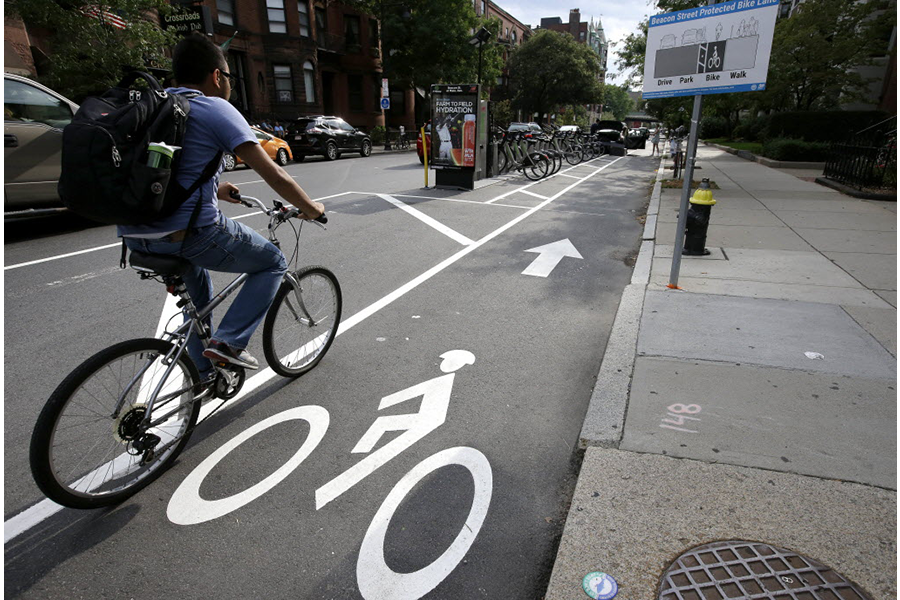Is this the future of bike lanes?
Loading...
Gone are the days of slapping some white paint on the asphalt and calling it a bike lane.
Cities across the globe are building "protected" lanes or "cycletracks" to build barriers between cyclists and automobiles. These barriers can be concrete curbs, fences, planters, or even parked cars.
"For 50 years, we've just been putting down a stripe of white paint, and that was how you accommodated bikes on busy streets," Martha Roskowski, director of People for Bikes, a Boulder, Colorado-based advocacy group that's calling for better designed bike lanes, told the Associated Press. "What we've learned is that simply doesn't work for most."
The amount of people commuting to work via bicycle rose by about 60 percent from 2000 to the 2008-2012 period, according to the US Census Bureau. But with that shift come more fatal accidents with cyclists and cars.
In already bike-friendly European cities, like Copenhagen and Amsterdam, protected bike lanes have been around for decades. But other European cities are increasingly following suit. London, for example, has opened "cycle superhighways" that are planned across the city. On these lanes, a curb separates the bikes from the cars.
But the United States has been a bit slower on the uptake. New York started setting up protected bike lanes across the city in 2007. By 2013, there were about 100 miles of protected lanes in 32 cities across the country, according to People for Bikes. Now there are about 240 miles in 94 cities, but that's still just a small portion of all bike lanes, according to Roskowski.
Plans are in motion to expand these protected lanes in large cities across the country and at least two dozen cities have already begun to install these new types of lanes just this year, according to People for Bikes.
Chicago added 9 miles this year, but Mayor Rahm Emanuel promised 50 more miles of protected lanes to be built over the next three years.
Boston has already seen eight cyclist fatalities this year, but the city has also reconfigured a portion of Beacon Street leading to the Fenway Park area so that rows of parked cars form a barrier between cyclists and moving vehicles.
Not all new types of bike lanes are being hailed as progress.
In San Francisco, the city tested a "raised" bike lane where the lane was built up higher than vehicle lanes. But Chris Cassidy of the San Francisco Bicycle Coalition says cars are still parking in the lane, blocking cyclists' path.
Some Japanese cities have put their protected bike lanes on sidewalks, so pedestrians and cyclists end up competing for the space.
Despite the design flaws in some protected bike lanes, Mikael Colville-Andersen, CEO of Copenhagenize Design Co., a Danish firm that works with cities on bike infrastructure projects, said "Cities are becoming more rational again, after the folly of car-centric planning."
This report contains material from the Associated Press.






